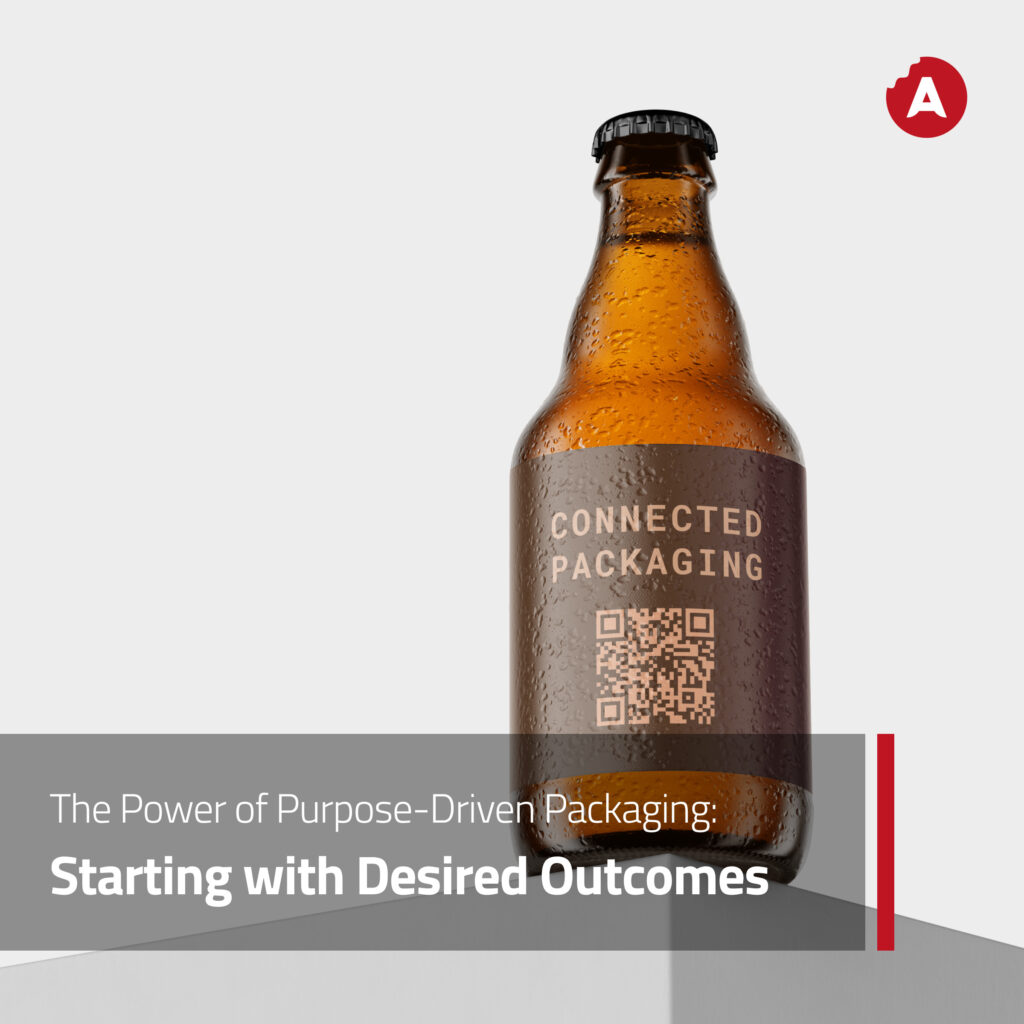
Working amongst consumer preferences and sustainability demands, the strategy of starting with desired outcomes and working backward has emerged as a cornerstone of effective packaging design. This approach not only ensures that connected packaging solutions are aligned with brand objectives but also drives purpose-driven initiatives that resonate with consumers on a deeper level. Let’s delve into how this strategic mindset can revolutionize packaging design and pave the way for more impactful and meaningful brand experiences.
Beginning with the End in Mind: Defining Desired Outcomes
Before diving into the intricacies of connected packaging design, it’s essential to start by defining clear and measurable outcomes. What are the specific goals and objectives that the packaging solution aims to achieve? Whether it’s enhancing consumer engagement, reducing environmental impact, or increasing product visibility, articulating desired outcomes provides a roadmap for designing packaging solutions that deliver tangible results.
Working Backward: Reverse Engineering Packaging Solutions
With desired outcomes firmly established, the next step is to work backward and reverse engineer the packaging solution. This involves identifying the key components and functionalities required to achieve the desired objectives. By deconstructing the packaging design process in this manner, brands can ensure that every element serves a purpose and contributes to the overarching goals of the initiative.
The Benefits of Purpose-Driven Packaging Initiatives
Adopting a purpose-driven approach to packaging design offers a myriad of benefits for brands and consumers alike. From fostering brand authenticity and loyalty to addressing pressing environmental concerns, purpose-driven packaging initiatives have the power to make a meaningful impact. By aligning packaging solutions with brand values and consumer preferences, brands can create authentic connections with their audience and differentiate themselves in the marketplace.
Driving Innovation and Creativity
Starting with desired outcomes encourages innovation and creativity in packaging design. Rather than adhering to traditional norms and conventions, brands are free to explore novel ideas and unconventional approaches that push the boundaries of possibility. This mindset shift fosters a culture of innovation and experimentation, ultimately leading to breakthroughs in connected packaging solutions that captivate consumers and drive business success.
Case Studies: Real-World Examples of Purpose-Driven Packaging
To illustrate the effectiveness of starting with desired outcomes, it’s helpful to examine real-world examples of purpose-driven packaging initiatives. From brands that prioritize sustainability and eco-consciousness to those that prioritize consumer engagement and brand storytelling, there are countless success stories that demonstrate the power of purpose-driven packaging design. By studying these case studies, brands can glean valuable insights and inspiration for their own packaging endeavors.
Designing with Purpose, Impacting with Purpose
In conclusion, starting with desired outcomes and working backward is a strategic approach that can revolutionize connected packaging design. By defining clear objectives, reverse engineering packaging solutions, and prioritizing purpose-driven initiatives, brands can create packaging solutions that resonate with consumers on a deeper level and drive meaningful impact. As brands continue to navigate the complexities of the modern marketplace, embracing purpose-driven packaging design will be essential for standing out, driving engagement, and fostering long-term success.
